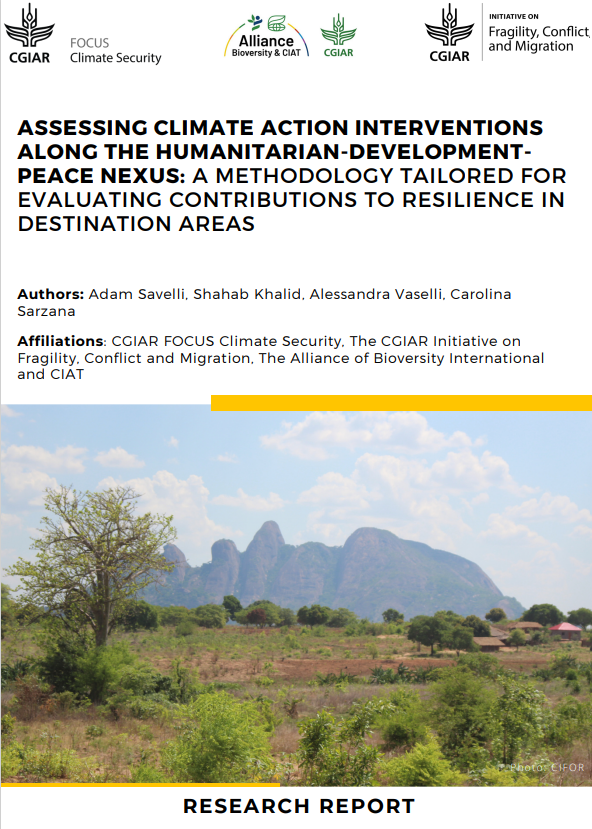ncreasing climate and conflict-related displacement in fragile or conflict-affected states threatens human security and sustainable development around the world. As forced displacement increases and becomes more protracted in length, destination areas—where displaced and host communities often have low adaptive capacity and live side by side, sharing resources related to land, food, and water systems—are particularly exposed to human security risks. Here, demographic pressures can put pressure on public services and infrastructure, identity-based an political tensions can lead to violent conflict, and poor access to finance can lower the opportunity costs for individuals to engage in violence, or join non-state armed groups. Thus, targeted research is needed to explore how interventions aiming to support climate resilience in destination areas also address risks across the humanitarian-development-peace nexus. Solutions intended to urgently meet the basic needs of households facing humanitarian crises must also support long-term sustainable development and be implemented in conflict-sensitive ways. To understand how climate resilience interventions address risk across the HDP nexus, we have developed a mixed-method approach of assessing recently completed or ongoing interventions in destination areas. It involves a medium-scale human security index survey of intervention participants (n=200), supply-side key informant interviews with the intervention design, implementation, and evaluation teams, demand-side key informant interviews that use most significant change and positive deviance approaches to understand the enablers of adversely positive outcomes, and a quantitative assessment of how well the intervention address local drivers of conflict and instability (Climate Security Sensitivity Tool).
Savelli, A.; Khalid, S.; Vaselli, A.; Sarzana, C.

